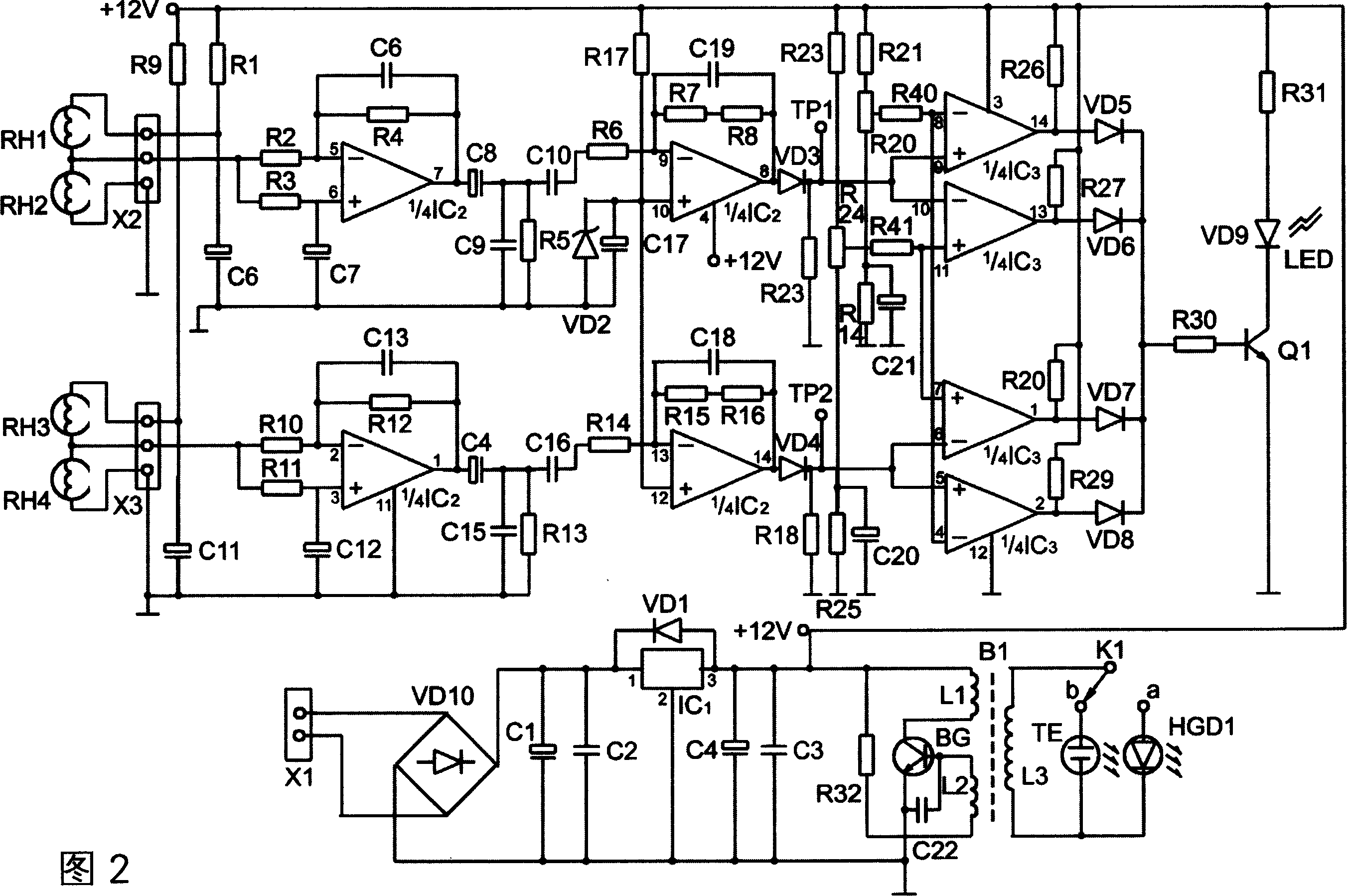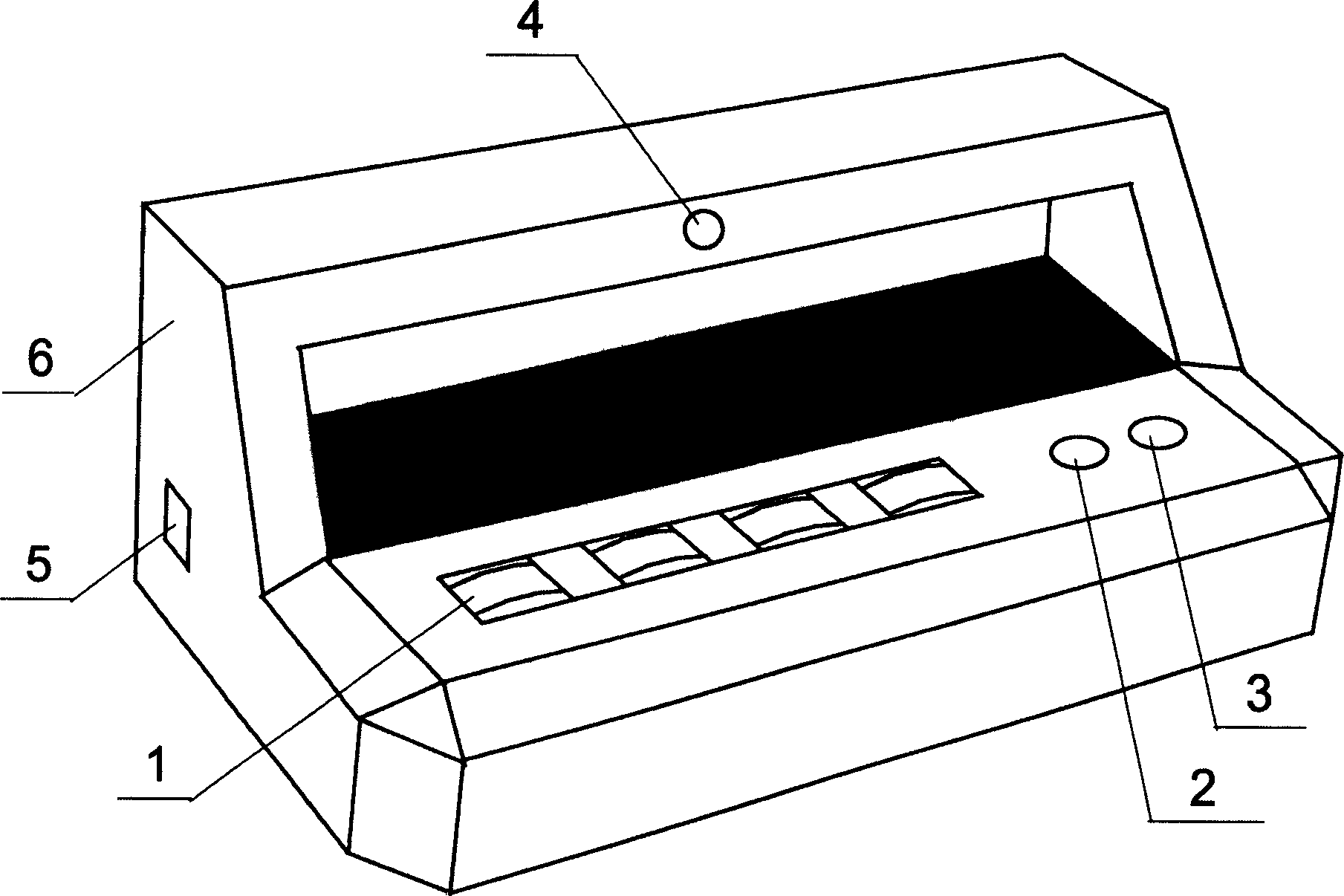Multiple anti-forge ink with memory code and testing method thereof
A technology for memorizing passwords and inks, applied in the field of multiple anti-counterfeiting inks and detectors, can solve the problems of poor anti-counterfeiting effect and easy cracking, and achieve the effect of preventing counterfeit signatures
- Summary
- Abstract
- Description
- Claims
- Application Information
AI Technical Summary
Problems solved by technology
Method used
Image
Examples
Embodiment 1
[0035] First, the 10nm magnetic memory material r-Fe 2 o 3 Carry out magnetization, and then give the magnetic memory material r-Fe by electromagnetic conversion 2 o 3 Enter the password information to make the r-Fe of each particle 2 o 3 Zhongdu memorizes the password information with the same content (the tone of C key 2 in the vocal range), take 200 copies of ink, r-Fe 2 o 3 33 parts, 36 parts of 30 nanometer infrared phosphor, 35 parts of 50 nanometer ultraviolet long wave phosphor, 28 parts of 50 nanometer ultraviolet short wave phosphor, 18 parts of surfactant oleic acid, NH 3 6.6 parts, miscible, use NaOH or KOH, NH 4 OH to adjust the PH value of the ink to 8, if not, add a small amount of alkaline compound, add kerosene or fluoroether oil to keep the filling amount of magnetic memory material, infrared phosphor, and ultraviolet phosphor at 13-30 %, add 0.5 parts of anhydrous sodium sulfate to adjust the viscosity, add 5 parts of ethylene glycol to lower the soli...
Embodiment 2
[0037] Firstly, the 30nm magnetic memory material CrO 2 Carry out magnetization, and then give the magnetic memory material CrO through electromagnetic conversion 2 Enter the password information to make each particle of CrO 2 Zhongdu memorizes the password information with the same content (the sound of C key 3 in the range), take 200 copies of ink, CrO 2 37 parts, 38 parts of 30 nanometer infrared phosphor, 30 parts of 50 nanometer ultraviolet long wave phosphor, 29 parts of 50 nanometer ultraviolet short wave phosphor, 20 parts of surfactant oleic acid, NH 3 6.6 parts, miscible, use NaOH or KOH, NH 4 OH to adjust the pH value of the ink to 8.5, if not, add a small amount of basic compounds, add kerosene or fluoroether oil, and keep the filling amount of magnetic memory materials, infrared phosphors, and ultraviolet phosphors at 13-30 %, add 0.2 parts of anhydrous sodium sulfate to adjust the viscosity, add 5 parts of ethylene glycol to lower the solidification temperatur...
Embodiment 3
[0039] First, the 30nm magnetic memory material Co-Fe 2 o 3 Carry out magnetization, and then give the magnetic memory material Co-Fe by electromagnetic conversion 2 o 3 Enter the password information to make the Co-Fe of each particle 2 o 3 Zhongdu memorizes the password information with the same content (the sound of C key 4 in the vocal range), take 200 copies of ink, Co-Fe 2 o 3 32 parts, 30 parts of 30 nanometer infrared phosphor, 28 parts of 50 nanometer ultraviolet long-wave phosphor, 26 parts of 50 nanometer ultraviolet short-wave phosphor, 16.6 parts of the mixture of perfluorooctanoic acid and fluorocarbon oil, NH 3 6 parts, miscible, use NaOH or KOH, NH 4 OH to adjust the PH value of the ink to 9, if it cannot be reached, add a small amount of alkaline compound, add kerosene or fluoroether oil, and keep the filling amount of magnetic memory material, infrared phosphor, and ultraviolet phosphor at 13-30 %, add 1 part of anhydrous sodium sulfate to adjust the v...
PUM
 Login to View More
Login to View More Abstract
Description
Claims
Application Information
 Login to View More
Login to View More - R&D
- Intellectual Property
- Life Sciences
- Materials
- Tech Scout
- Unparalleled Data Quality
- Higher Quality Content
- 60% Fewer Hallucinations
Browse by: Latest US Patents, China's latest patents, Technical Efficacy Thesaurus, Application Domain, Technology Topic, Popular Technical Reports.
© 2025 PatSnap. All rights reserved.Legal|Privacy policy|Modern Slavery Act Transparency Statement|Sitemap|About US| Contact US: help@patsnap.com



